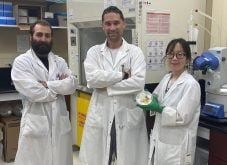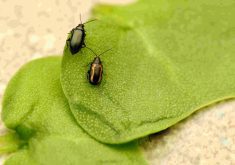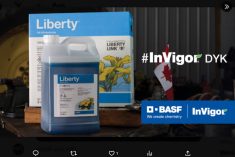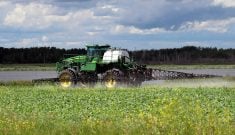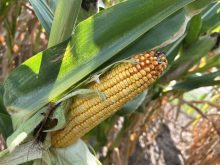Pea leaf weevil is a nasty pest of peas and faba bean and its quirky behaviour makes it almost impossible to manage.
The weevils are small and difficult to see. The farmer often doesn’t know they’re in the field until they find nicks in the leaves of their crop. By that time, it’s too late for the sprayer. The eggs have hatched and the larvae are down in the soil.
“The larvae do the economic damage, so for control to be effective, you have to target that stage,” said University of Alberta doctoral student Maggie MacDonald, but “because [the larvae are] so safe inside those root nodules, there really isn’t a good way to target them.”
Read Also

Still hard to predict precise fertilizer payback
Despite decades of advances, international research finds no clear answer for where and when adding nutrient will fail to boost growth.
Why it matters: The pest was first found in Manitoba in 2019. Since then, reports have spread from the northwest region to southwest and parts of central Manitoba.
This makes pea leaf weevil a good candidate for biological control provided by some kind of predatory insect that can meet the weevil on its own ground. Researchers are searching for a natural enemy that will either take out the adults when they arrive in the field, eat their eggs before they hatch or go after larvae in the soil.
There’s one in particular that’s caught attention: a ground beetle with the Latin name Pterostichus melanarius (P. melanarius).
“Most ground beetles are generalist predators that are known to eat slugs and other insects,” said Agriculture and Agri-Food Canada entomologist Meghan Vankosky. “They’ll go after the eggs, the larvae, the pupae, the adults, and then there are groups within the ground beetles that are known to eat weed seeds, so there’s a lot of interest in ground beetles for biological control of pests.”
Non-picky eaters
The beetle of interest against pea leaf weevil is plentiful in Western Canada, despite being an import itself. It’s a European species that likely landed on North America’s East Coast in the 1920s as a passenger within the soil they used as ship ballast.
“When they took out the ballast, they would put the dirt onto the land and the beetles would disperse,” MacDonald said. “And then on the West Coast, it was introduced much later through nurseries. The beetles were found in plants shipped from Asia and Europe… It’s interesting because when you talk about natural enemies, people always talk about native natural enemies.”
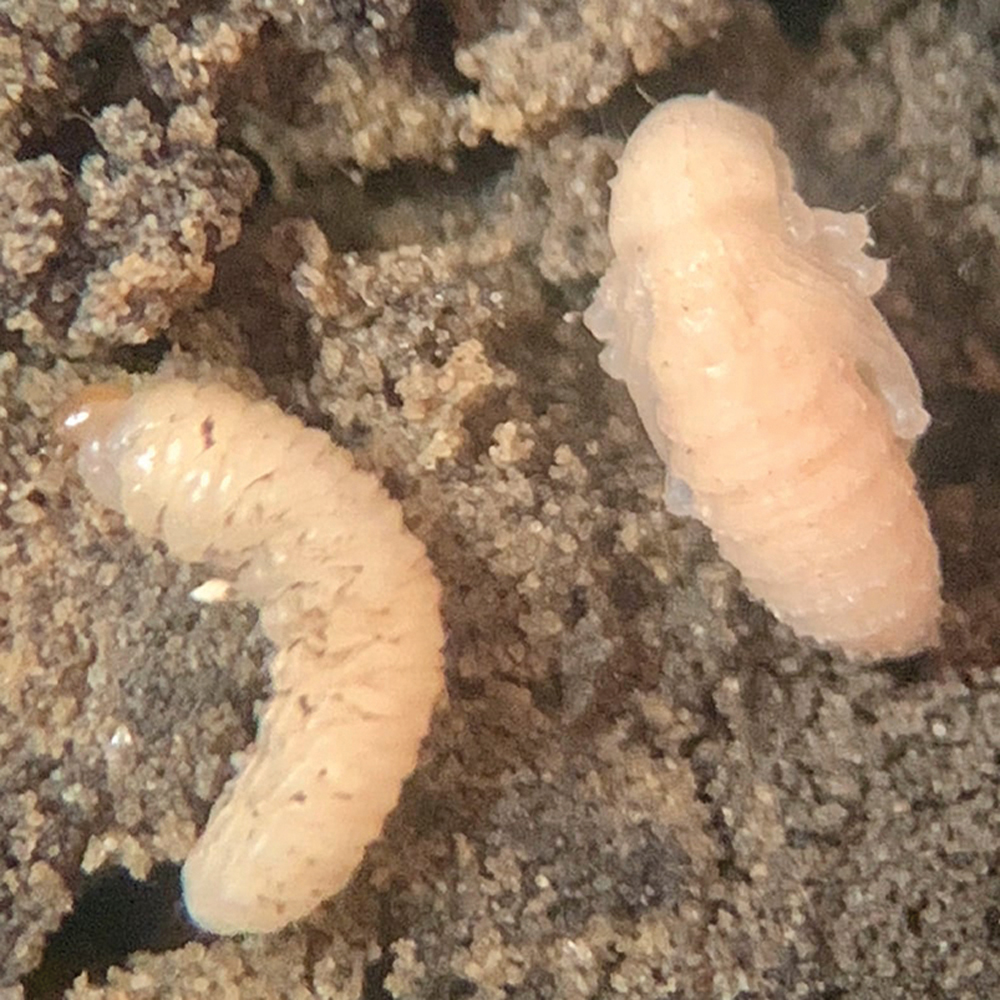
Traps set for ground beetles in western Canadian fields showed P. melanarius were common. Since they were already plentiful in fields, it made sense to look closer at what they were eating and whether they could be a useful biological control species.
“They’re kind of like the garbage cans of the agro-ecosystem. They’ll eat almost anything and their larvae are also predatory,” MacDonald said
But do they eat pea leaf weevils? If so, are they eating adults, larvae or pupae? Those were difficult questions to answer since the adult weevils are so small and the larvae and pupae were in soil where observation was difficult.
To tease out answers, MacDonald set beetles up in a captive lab situation and found that P. melanarius will eat the adult weevils.
“The beetles are starved so they’re hungry, so it makes sense that they’re eating them,” MacDonald said. “So, they have the ability to kill them and eat them, but you can’t really compare laboratory experiments to the field.”
Real-world application
It’s one thing to watch two insects in a closed cage. It’s quite another in the great outdoors. How a small beetle interacts with an even smaller weevil is difficult, if not impossible, to observe under natural conditions.
MacDonald’s research has previously examined 40 to 60 sites to gauge distribution of the pest, but also to see what predators show up in those fields.
If P. melanarius is in the same field as the weevil, researchers set pitfall traps to capture as many as they can over a 24-hour period. The researchers then examine beetle stomach contents to see if they’ve eaten pea leaf weevil.
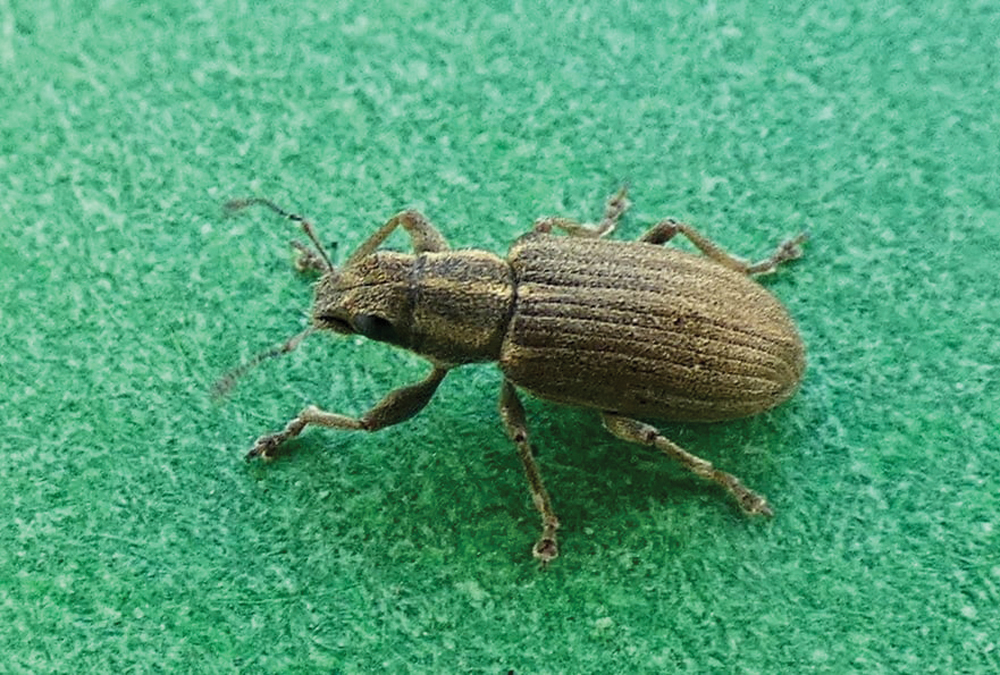
Once again, that’s a daunting task on a subject so small. The best way determine stomach contents is through DNA. If pea leaf weevil DNA is found in the stomachs of P. melanarius, researchers will know they are, in fact, predators of the pest.
“Currently, I’m developing DNA primers and once they’re all tested, I’ll be able to work on my actual samples,” MacDonald said. “I think once we’re able to see what they’re eating in the field and we’re able to quantify that, I think that will help us answer some questions.”
It’s possible that P. melanarius isn’t eating pea leaf weevil at all, and MacDonald says she’s bracing herself for that possibility.
If not, perhaps there is another predator species or maybe several. This kind of work does not always move quickly.
“With integrated pest management, there is never a silver bullet,” MacDonald said. “I think figuring out what P. melanarius is doing in the field will be good, but I think looking at other species that may [target] the eggs will also be useful. Then you can have an idea of the predator complex and the capability of that in the system.”




